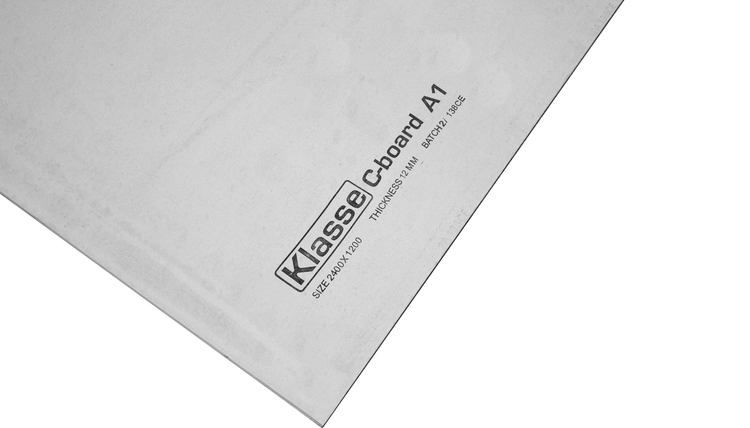To understand the differences between cement and calcium silicate boards, it is important to look at their compositions. Calcium silicate boards are typically made of calcium silicate, a compound composed of calcium oxide (CaO) and silicon dioxide (SiO₂). They are known for being lightweight, durable & fire-resistant. They generally, contain a high proportion of calcium silicate, typically between 60-90% by weight, depending on the manufacturer and standards. Boards containing less than this proportion and incorporating cement and fibres are usually referred to as calcium silicate cement boards.
Both calcium silicate boards and calcium silicate cement boards serve distinct purposes. Calcium silicate boards are renowned for their exceptional fire resistance, making them ideal for passive fire protection in areas like concrete and steel structures, lift shafts, and stairwells. However, due to their lower strength and impact resistance, they are not typically used as sheathing boards.
Calcium silicate cement boards, while also offering fire resistance, are reinforced with fibres that enhance their structural strength. This added durability makes them more suitable for applications requiring robust performance, such as external sheathing within SFS.
Klasse offers solutions for both calcium silicate cement boards and calcium silicate boards. Our Klasse C-board® is a calcium silicate cement board with less than 40% calcium silicate in its composition. It is robust and strong, making it an ideal choice for projects that require high racking strength, comparable to the Benx Y-wall.
Klasse S-board®, classified as a calcium silicate board, contains less than 70% calcium silicate. Its high fire resistance makes it an excellent choice for the applications mentioned earlier, such as passive fire protection. A comparable product on the market is Promat PROMATECT.
Did you know – Calcium silicate is composed of calcium oxide or calcium hydroxide and quartz. Often on a sheathing board MSDS (Material Safety Data Sheet), you will see quartz listed as a silica source. During the autoclaving process, a chemical reaction occurs between the calcium oxide and silica, forming calcium silicate hydrate. This reaction is crucial as it imparts the boards with their final strength, durability, and stability.
For more information, visit our C-board® and S-board® product pages, or contact our team of experts today who will be happy to discuss our products, your requirements and more with you.









